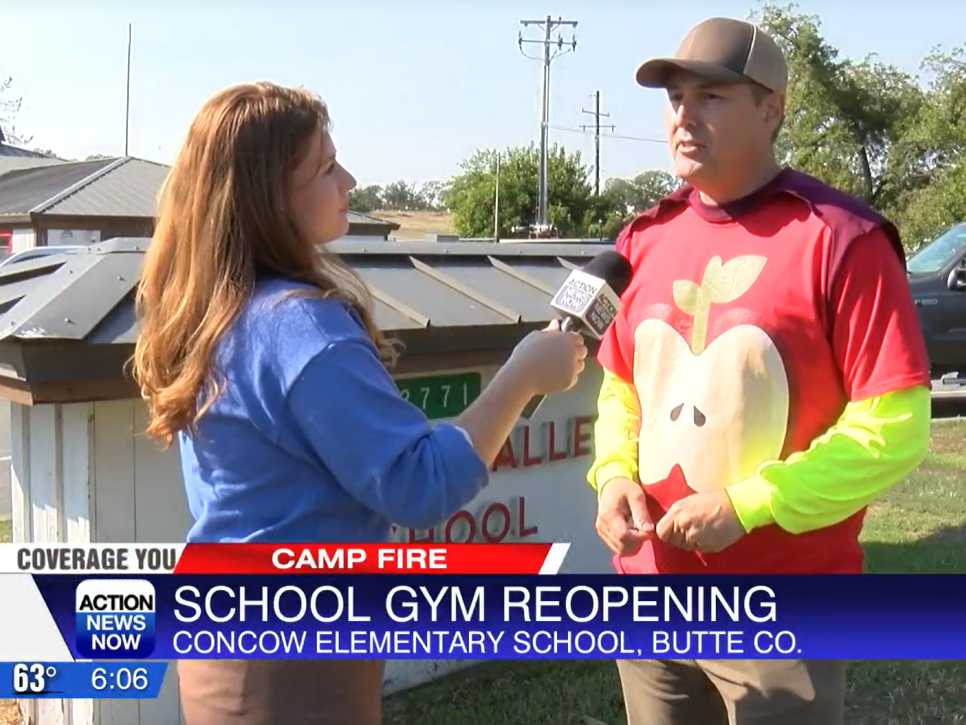Updated 9/5/23: There has been little variance in the amount of weeks in a school year during my past twenty (20) years in education. In California, there are one-hundred-eighty (180) school days in a school year. When you divide this number by 5 days in a week, the total number of weeks is thirty-six (36). There were a few tough budget years in the mix where a district could reduce the amount of days via board action to below one-hundred-eighty (180). Districts were subsequently required to bring the amount of days back up in short order. Even during times of financial difficulty, districts were still required to have a one-hundred-seventy-five (175) day school year or thirty-five (35) weeks of instruction in California. The data is similar across the country.
Try one of these low-tech solutions to help this school year.

How many weeks is the school year?
On average (mean) in the United States, the total amount of weeks of instruction in a school year is 35.65. Additionally, the median amount of weeks required is 36 and the most common amount of weeks required (mode) is 36.
Only forty 40 states were used to calculate the mean, median, and mode. The reason for this is because ten (10) states do not have a minimum amount of days, weeks, and/or hours.
How many weeks is the school year by state?
| State | Minimum Required Weeks of School |
| Alabama (AL) | 36 |
| Alaska (AK) | 36 |
| Arizona (AZ) | 36 |
| Arkansas (AR) | 35.6 |
| California (CA) | 36 |
| Colorado (CO) | 32 |
| Connecticut (CT) | 36 |
| Delaware (DE) | N/A – Required hours only |
| Florida (FL) | 36 |
| Georgia (GA) | 36 |
| Hawaii (HI) | 36 |
| Idaho (ID) | N/A – No required days and no required hours |
| Illinois (IL) | 36 |
| Indiana (IN) | 36 |
| Iowa (IA) | 36 |
| Kansas (KS) | 36.2 (K-11th) |
| Kentucky (KY) | 34 |
| Louisiana (LA) | 35.4 |
| Maine (ME) | 35 |
| Maryland (MD) | 36 |
| Massachusetts (MA) | 36 |
| Michigan (MI) | 36 |
| Minnesota (MN) | 33 |
| Mississippi (MS) | 36 |
| Missouri (MO) | 34.8 (5-day week) |
| Montana (MT) | N/A – Required hours only |
| Nebraska (NE) | N/A – Required hours only |
| Nevada (NV) | 36 |
| New Hampshire (NH) | 36 |
| New Jersey (NJ) | 36 |
| New Mexico (NM) | N/A – Required hours only |
| New York (NY) | 36 |
| North Carolina (NC) | 37 |
| North Dakota (ND) | 35 |
| Ohio (OH) | N/A – No required days and no required hours |
| Oklahoma (OK) | 36 |
| Oregon (OR) | N/A – Required hours only |
| Pennsylvania (PA) | 36 |
| Rhode Island (RI) | 36 |
| South Carolina (SC) | 36 |
| South Dakota (SD) | N/A – No required days and no required hours |
| Tennessee (TN) | 36 |
| Texas (TX) | N/A – Required hours only |
| Utah (UT) | 36 |
| Vermont (VT) | 35 |
| Virginia (VA) | 36 |
| Washington (WA) | 36 |
| West Virginia (WV) | 36 |
| Wisconsin (WI) | N/A – Required hours only |
| Wyoming (WY) | 35 |
| Average (mean) | 35.65 |
| Median (middle when sorted) | 36 |
| Mode (most common) | 36 |
The amount of weeks in a school year does not tell the whole story.
These 36 weeks are not consecutive since there are weeks of breaks, 3-day weekends, and other days when school is not in session. If school started after Labor Day (which it statistically doesn’t – see an explanation here), thirty-six (36) weeks later with no days off is the second week of May. The last day of school is approximately forty-two weeks after the first day of school. There are typically six (6) weeks of breaks during a typical school year including Thanksgiving, Christmas (winter), Easter (spring), Presidents, Veterans, etc…
Holidays and Breaks in U.S. Educational Institutions
Across the United States, educational institutions observe a diverse array of breaks and holidays, catering to the needs of students and educators alike. Let’s delve into some of these intervals that punctuate the academic calendar.
Spring Retreat – As winter thaws, the month of March welcomes the cherished Spring Break. Students and teachers alike relish a week-long hiatus, serving as a well-deserved pause before the approaching summer recess.
Autumn Escape – The fall season brings with it the notion of an Autumn Break. This trend, akin to Spring Break, offers a full week off either in October or synchronized with the Thanksgiving week. It provides an opportunity to recharge before the rigors of the academic term.
Festive Winter Interlude – Winter Break, an eagerly anticipated time, spans the final two weeks of December. Aligned with festivities like Christmas, Hanukkah, Kwanzaa, and New Year’s celebrations, this break marks the conclusion of the initial semester. It’s not just a break; it’s a season of jubilation.
Inaugural Pause: Labor Day – Labor Day, occurring on the first Monday of September, marks the maiden significant break of the academic year. For some, it even signals the start of the school year, bidding adieu to the leisurely days of summer and ushering in the realm of learning.
Thanksgiving Get-Together – Around Thanksgiving, schools traditionally offer a reprieve spanning Wednesday through Friday. This short but much-needed respite allows students and educators to bask in the warmth of family bonds and indulge in gratitude.
Celebrating Martin Luther King Jr. – The third Monday of January becomes a moment to honor the legacy of Martin Luther King Jr. This day doesn’t merely reflect a break; it symbolizes a commitment to the principles of equality and social justice that King championed.
Reflecting on Presidents Past – Come February, Presidents’ Day graces the calendar on the third Monday. Beyond a break, it’s a time to reflect on the nation’s leadership history, spanning from the Founding Fathers to modern executives.
Navigating the Unpredictable: Snow Days – In regions that witness heavy snowfall, schools confront the enigma of snow days. Depending on the extent of snow accumulation, institutions decide whether to brave the weather or close their doors. It’s an exercise in flexibility and safety, with road conditions and student well-being at the forefront.
Teacher Needs: Workdays with Purpose – Certain districts provide designated teacher workdays, aimed at finalizing grading for a quarter or semester. These focused periods allow educators to ensure accurate evaluations while students get a breather. It’s a moment of collaboration and alignment in pursuit of educational excellence.
Tracing the Evolution of the 180-Day (36-Week) School Year
The concept of the 180-day (36-week) school year has a rich historical background that has shaped modern education systems around the world. Dating back to the early 20th century, the establishment of a standardized school year duration emerged as a response to various socio-economic and agricultural factors. Before this transformation, school schedules were often irregular, with breaks aligned to planting and harvesting seasons. The push for a more structured school year gained momentum as industrialization progressed, emphasizing the need for an educated workforce capable of meeting the demands of an evolving society. Over time, the 180-day school year became a benchmark for many nations, ensuring a balance between academic instruction, breaks, and time for students to engage in extracurricular activities. This historical journey highlights how the 180-day school year not only accommodated economic shifts but also fostered a consistent and comprehensive approach to education.
California’s Unique Stance on Four-Day School Weeks
The four-day school week trend in the United States, driven by various reasons and met with unique challenges in California due to state regulations mandating a five-day school week for full funding, has varying outcomes and benefits, with the case of Leggett Valley Unified School District demonstrating advantages in terms of work-life balance, teacher retention, and reduced commuting costs, but the debate continues over its impact on instructional time and academic performance in different educational settings.
The four-day school week trend, embraced by many school districts across the United States for reasons ranging from financial savings to enhanced student attendance and teacher recruitment, is met with unique challenges in California. Only two remote school districts, Leggett Valley Unified and Big Sur Unified, have managed to implement the four-day week, owing to California’s Education Code, which mandates a five-day school week for full funding. While exemptions exist for certain remote districts, not all have adopted the shortened schedule. Leggett Valley Unified’s successful transition to a four-day week over a decade ago has demonstrated benefits, including improved work-life balance for families, teacher retention, and reduced commuting costs. Despite its national popularity, the four-day school week remains contentious due to concerns about decreased instructional time and academic performance. The flexibility offered by this schedule benefits administrators, teachers, and students alike, but its implementation faces varying challenges and outcomes in different educational settings, as highlighted by the case of California.
Across the United States, the amount of time students spend in school is subject to considerable variation, with state regulations playing a pivotal role in shaping school schedules. While some states require a minimum of 180 school days, accommodating a four-day school week is often a challenge. A handful of states mandate fewer days, with some employing hourly requirements instead of day-based ones. Notably, Idaho, Ohio, and South Dakota have no such requirements. In California, where flexibility is granted for four-day school weeks, districts must still meet annual instructional minute quotas, ranging from 36,000 minutes for kindergarten to 64,800 minutes for high school. The example of Leggett Unified School District in California, where students attend school for 152 days, showcases the diverse schedules ranging from early morning to late afternoon departures.
Is a four-day school week a bad idea?
The debate over the merits of a four-day school week continues, with research indicating mixed results, as it gains popularity in the United States, particularly in rural areas, where it is viewed positively by many, but concerns about its impact on academic achievement and long-term effects persist.
The debate over the merits of a four-day school week has intensified as it gains popularity in the United States, with hundreds of thousands of students across 24 states attending school for just four days a week. Initially introduced as a cost-saving measure, the shortened school week has garnered immense popularity among families, particularly in rural areas. However, its impact on education remains a subject of contention. While surveys indicate high approval rates among parents and students, recent research suggests potential drawbacks. Studies have revealed that four-day weeks can lead to decreased academic achievement, particularly in reading, with some students being more affected than others. In rural areas, where the majority of four-day schools are located, students fare better than their small town and suburban counterparts, possibly due to factors like sports and teacher quality. Nevertheless, the overall implications of the four-day school week remain uncertain, with concerns about long-term effects and the possibility of hindering academic progress. Ultimately, while it may be a popular policy, the four-day school week may not be an ideal solution for public finances or student learning.
The best way to think about the weeks of a school year…
“A forty-two (42) week school year calendar begins after a ten (10) week summer break ends.” Josh Peete



